Thylacine (16 page)
This 4600-year-old mummified thylacine, nicknamed âOld Hairy', was found at the base of a
shaft on the arid Nullarbor Plain in 1966. At that time, mainland thylacines were well on the
way to extinction.
(Western Australian Museum)
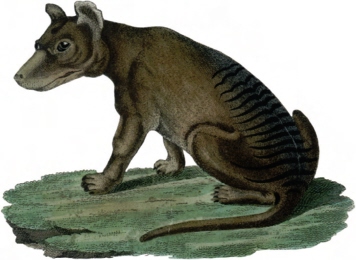
The first known European depiction of a thylacine was by Van Diemen's Land Surveyor-General
George Harris. He sent it, together with a written description of the animal, to the Linnaean Society
in London in 1806.
(Gerard Willems, Hobart)
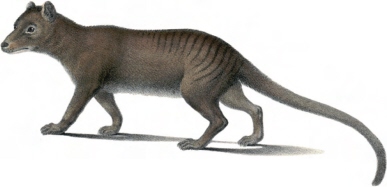
According to Eric Guiler, this is the âfirst representation of the Tasmanian tiger in a German
treatise of natural history ⦠It is obvious that the artist had no model at his disposal'
(
Tasmanian Tiger: A Lesson to be Learnt
, p. 89). (Gerard Willems, Hobart)
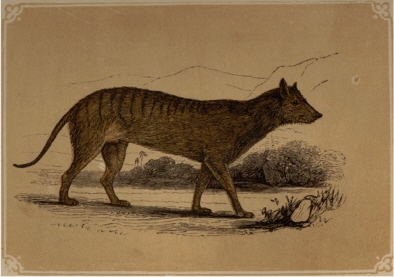
Although anatomically incorrect in every way, this c.1840 depiction of the thylacine by an
unknown European artist is possibly the only one to place it in an Australian mainland setting
(palm trees were rare in Tasmania). Indeed, the caption reads, âNew South Wales Wolf'.
(Gerard Willems, Hobart)
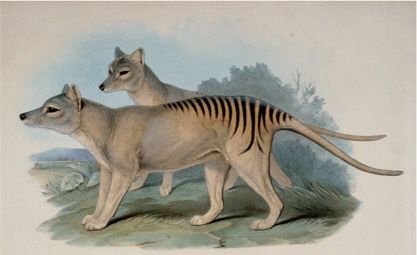
â
Thylacinus cynocephalus
' by Henry Richter. Perhaps the most well-known depiction of the
animal, it was painted for John Gould and appeared in his
Mammals of Australia
(1863).
(Collection Tasmanian Museum and Art Gallery)
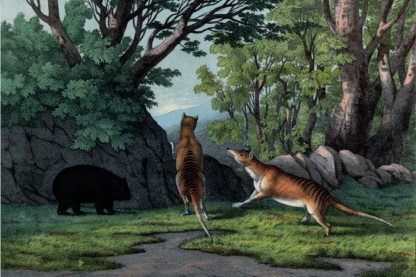
Popularly attributed to an artist by the name of Schreiber, this late nineteenth-century etching on
cloth is listed by the State Library of Tasmania's Allport Library and Museum of Fine Arts as
âartist and engraver unknown'.
(Gerard Willems, Hobart)

There are very few thylacine artefacts in existence. Those known include this jawbone pin-cushion and
eight-skin rug, which was bought at auction in 2002 for $270 000 by the Tasmanian Museum and
Art Gallery, Queen Victoria Museum and Art Gallery and Federal Hotels and Resorts.
(Collection Tasmanian Museum and Art Gallery)
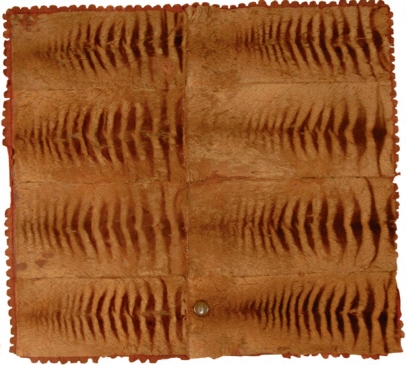
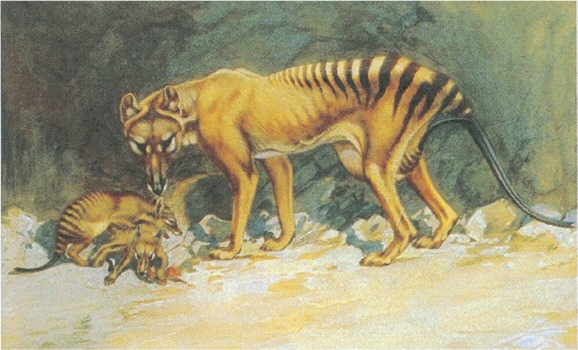
Painted by Gleeson in 1902, this portrait is based on a mother and cubs at the National Zoological Park in Washington DC. It is famous
for depicting the pouch in apparent use.
(Smithsonian Institution Archives)
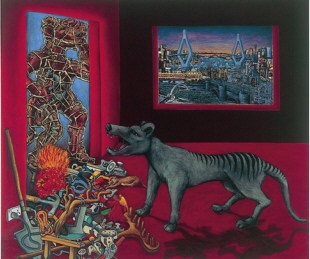
â
The MeetingâWickerman and the Tasmanian Tiger
' by Daniel Moynihan, 2001, 200x229
cm, oil on linen. The artist is represented by Gallery 101, Collins St, Melbourne.
(Daniel Moynihan)
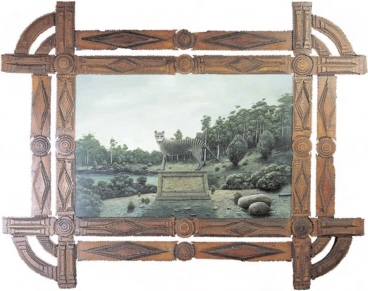
â
Up on a Pedestal
' by Michael McWilliams, 2000, 120x152 cm, acrylic on composition board in
antique tramp art frame.
(Courtesy Michael McWilliams, Lauraine Diggins Fine Art)
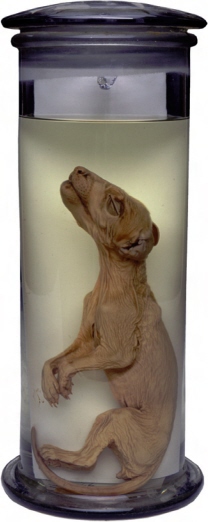
One of four preserved pouch young owned by the Tasmanian Museum and Art Gallery. This
specimen is about three months old, with hair just beginning to grow. Although difficult to
value, in 2002 it was estimated to be worth at least $2 million.
(Collection Tasmanian Museum and Art Gallery)
â. . . Really I have little sympathy with some of the modern principles of utility, through which so many “things of beauty” in the animal and vegetable world are destroyed to make room for man and his works, or to minister to his appetites and luxuries. Think of the extermination of rare and beautiful hummingbirds to provide ladies' hat ornaments. Ah, my friend, it is a sad business!'
